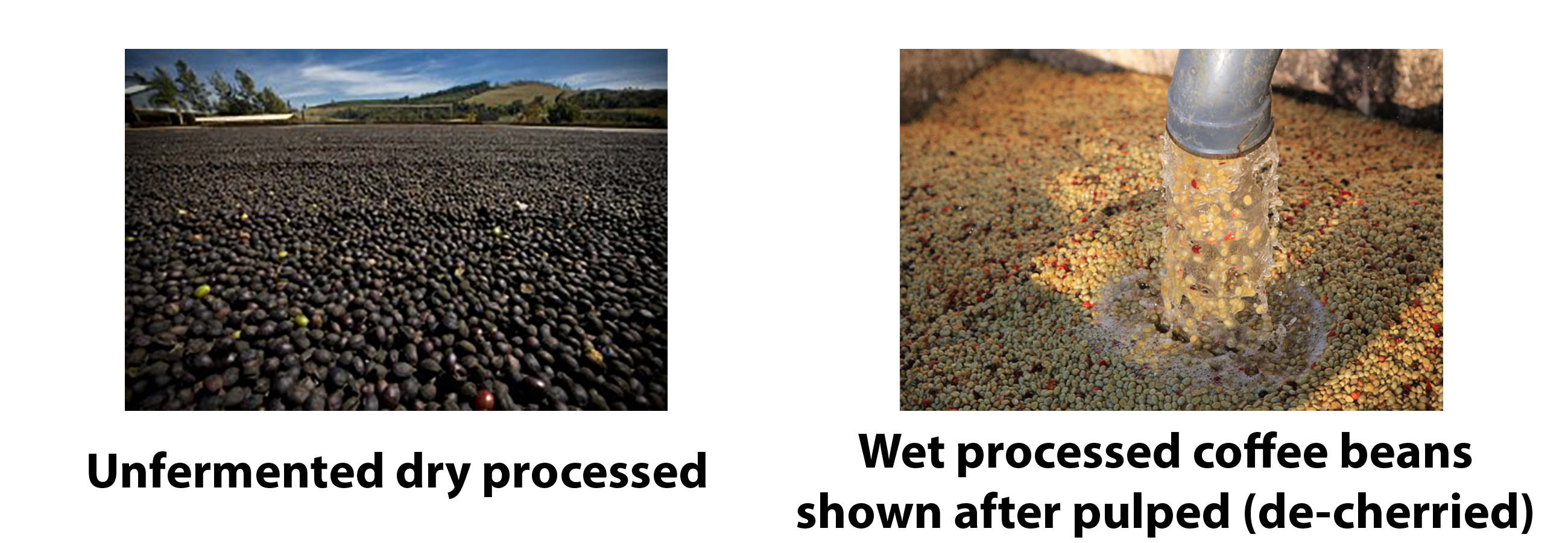Where Does Coffee Come From?
And what is coffee anyway??
With Sensei Joe

Coffee is actually not a bean at all. Coffee is the seed inside of the cherry of a coffee tree. Coffee trees are usually quite small with a cultivated height of around 2 meters (6’-6”) and are bush like. However, in the wild, coffee trees can get as tall as 9 to 12 meters (29’ to 39’). The cherries of a cultivated plant are harvested 3 times per year yielding approximately 1 pound of coffee per tree annually. High quality coffees will come from red ripe cherries which are usually hand-picked. The highest quality coffees will likely be further separated by seeds size as the larger seeds will be from the ripest cherries. Coffee is just like bananas or *****honeydew; it’s at its absolute best when fully ripened.
As mentioned before coffee is harvested 3 times per year. This is why harvesting is usually done by hand picking. When the first cherries are ripe, those ripe cherries will grow in the mix of unripe cherries. This means special attention is required to produce great coffee on the farm. This is also why there are cheaper coffees and expensive coffees. Expensive, higher quality coffees have a greater amount of work put into them. Therefore a greater amount of cost put into them long before they end up in you coffee maker.

Whether dry or wet processed, high quality coffee is processed immediately after harvesting to avoid invaders like mold into the equation. This fresh picked coffee, while processing, needs to produce a certain PH acidity that cannot be under or over shot as either will result in a lower quality coffee. This is extreamly important as the ultimate value of coffee is determined by taste alone from a “perfectly” brewed cup. Odds are that if a farmer cares about his coffee; then the end result will be a coffee that has retained a higher value for your cup!
Once processed, there are more than 200 chemical compounds in the green coffee bean. As soon as it is roasted, that number rockets to over 1000 chemical compounds. Many of these compounds contribute to the wonderful aromas and flavors we find in that tiny seed we know as the coffee bean. These compounds range from ash to oils and even Acetyl Methyl Carbinol or C
4H
8O
2… Say what?? Ha-ha, I had to throw that one in there as C
4H
8O
2 produces a buttery tone and aroma that is a good indicator of quality in coffee.
Dry processed coffees have in recent years earned a bad reputation (link again). But the fact still remains that when processed immediately and handled correctly, dry processing will bring out sweet fruit tones that are difficult to achieve with a wet process. Please don’t miss out on these wonderful coffees because someone on the net said wet processed is the only way to go. You have heard it before, just because it is on the internet doesn’t make it 100% true! Natural (dry) processing involves allowing the cherries to dry in the sun for 10 - 21 days followed by milling which removes the dried husk leaving the coffee beans behind. If you still will not try natural processed coffees, a great alternative is a pulped natural processed coffee. These coffees offer nearly the same characteristics as dry processed. An artical is coming soon to discribe pulped natural processing.
Brewing or
How To Keep Coffee Fresh would be great places to move to next.
_____________________________________________________





